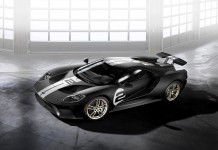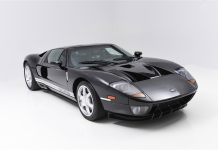The 2011 model equipped with an optional 2.0-liter EcoBoost™ I-4 engine will be the new class leader in the mid-size SUV segment, achieving at least a 30 percent increase in fuel efficiency compared with the current V-6-powered Explorer.
“The all-new Explorer will give a huge universe of existing and prospective customers the capability they expect and the luxury and convenience they want, all combined with the fuel economy they need,” said Mark Fields, Ford president of The Americas.
The new Explorer, due in Ford showrooms later this year, has added comfort and convenience features, while overall vehicle weight is reduced compared to the previous model. Extensive use of lighter and stronger high-strength steels such as boron add durability while saving weight. An aluminum hood is used, while a one-piece composite front bolster – the radiator support between engine and grille – is 65 percent lighter. Lighter weight equates to fuel and money saved.
Sophisticated engine controls and advanced technologies are key contributors to the Explorer’s improved fuel economy. Electric power-assisted steering, battery management, fast engine warm-up and aggressive deceleration fuel shutoff all combine to improve drive dynamics and save fuel. Explorer also features the first North American Ford application of a variable-displacement air conditioning compressor that reduces parasitic engine drag.
Powertrain advancements like twin independent variable camshaft timing and six-speed automatic transmissions help Explorer deliver responsive performance when needed combined with low-rpm efficiency when cruising.
SUV buyers placing highest priority on fuel economy can choose the available EcoBoost I-4. Delivering the power of a normally aspirated V6, this advanced engine pairs a turbocharger with direct gasoline injection to provide SUV buyers with projected class-leading fuel economy – pending EPA certification – with no compromise in performance.
Finally, all of these fuel economy enhancements are wrapped in a smooth, distinctive Explorer design that was extensively refined in wind tunnel testing. Designers and aerodynamicists collaborated to reshape sideview mirrors and harmonize the front air dam with the rear liftgate spoiler to significantly increase fuel efficiency on the highway. Reduced wind noise at speed is an incremental benefit.
“Explorer owners told us they want capability with convenience, and improved fuel economy without compromised performance,” Fields said. “We believe we’ve hit the mark with the next-generation Explorer. It has the potential to change perceptions of what a modern SUV is all about.”








